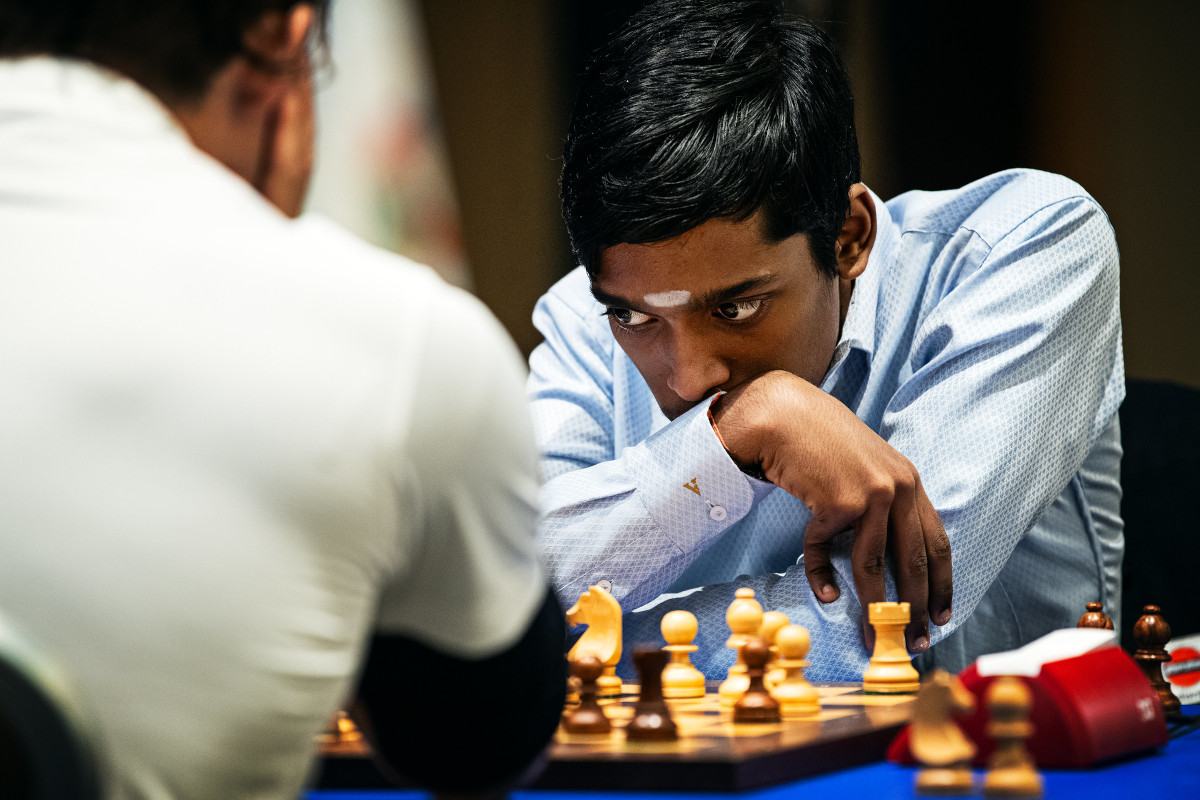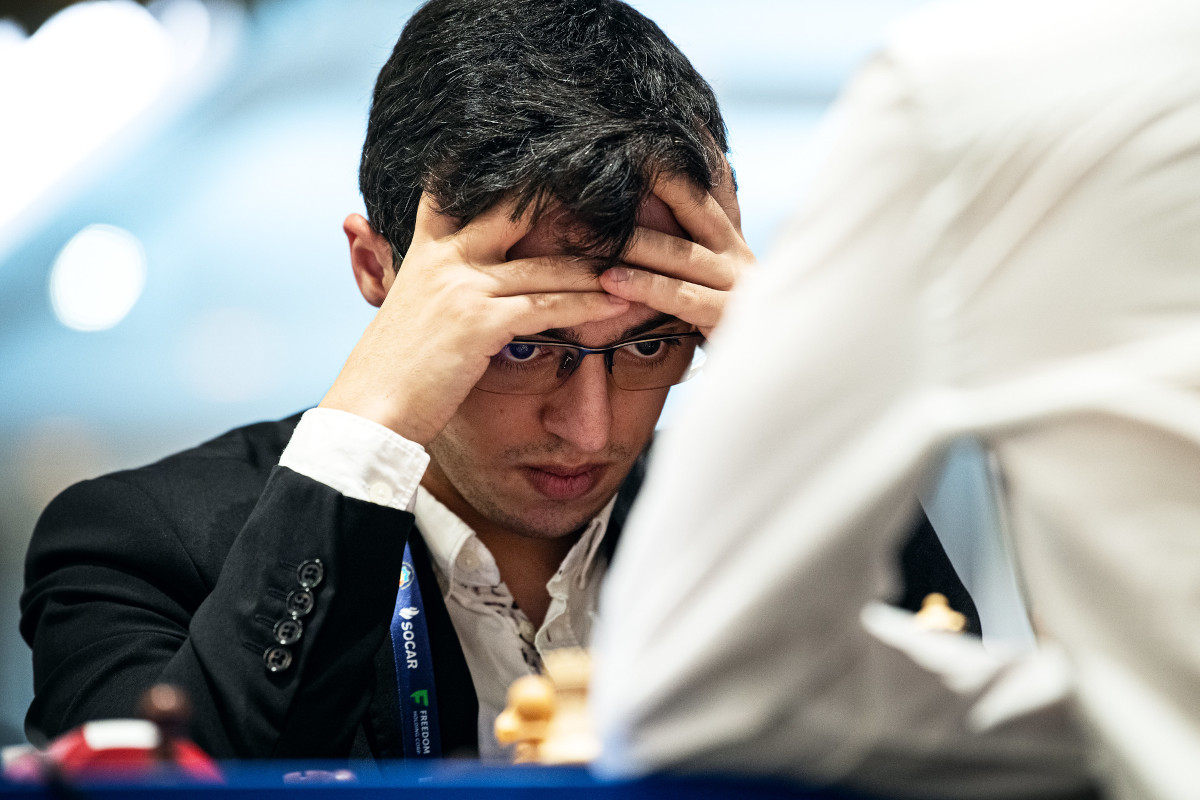


As I write these lines, the 24th European Team Chess Championship has drawn to a close. As expected, Carlsen performed well (+5, =3, -0). Magnus did not rest on his laurels when he was the World Champion and he does not let go of any opportunity to play serious chess even now.
Be that as it may, no one expected the recent World Cup Tournament to be a cakewalk for him. During his illustrious career Magnus had won every important chess competition, but not the World Cup. This jewel in the crown had eluded him in spite of some heroic effort in the past. Now it seemed to be even more challenging with both old and new rivals in the fray. On the one hand, there were seasoned players like Ivanchuk, Svidler, Caruana and Giri. On the other hand, there was the younger talent — Duda, Pragg, Gukesh — not to mention a new star on the horizon, Nijat Abasov.
How Magnus overcame his rivals is an important part of the story.

Praggnanandhaa Rameshbabu | Photo: FIDE / Stev Bonhage
But this DVD is not about Magnus and his conquest of the World Cup alone. It is also about the younger players and their quest for victory. Their level of preparation is also high. In this issue, Igor Stohl annotates the game Navara-Praggnaandhaa from the World Cup 2023. Citing a position from another game (on the 23rd move!) he writes, “I am pretty sure both players had this line on their disks beforehand”.
Pragg beat Nakamura, and Abasov beat Caruana. Admittedly, the latter did not do himself justice in that game. So let us see a different game by Abasov in this issue. It’s with Vidit Gujrathi, who got eliminated as a result of this game.
At the end of his annotations to the game, Abasov writes, “I appreciate Vidit’s sportsmanship in allowing me to deliver a checkmate on the board. It’s always heartbreaking to have a decisive game against a friend, I have to admit. But I also was happy to hear spectators applauding me after my last move. Definitely a moment to remember forever”.
Both players have shown sportsmanship of a high order here. By way of postscript, I may add that now Vidit Gujrathi has also become a World Championship candidate. He and Abasov will be battling together in the Candidates Tournament along with Pragg and Caruana.

Nijat Abasov | Photo: FIDE / Stev Bonhage

Hou Yifan | Photo: ChessBase India
This issue also carries a special feature on Hou Yifan with 22 annotated games. Curiously, half of the opponents are male GMs like Caruana, Nepomniachtchi and Nigel Short. Among the females, the Muzychuk sisters deserve mention.
There are 3 opening videos in this issue:
Take your pick.
What is more, there are as many as 11 opening surveys, ranging from the Caro-Kann to the King’s Indian. Among them I would single out the analysis of the Advance Variation of the French Defence (C02) by Tanmay Srinath, and the Rubinstein Variation in the Nimzo-Indian (A83) by Spyridon Kapnisis.
Tanmay Srinath has published a series of surveys on the French Defence in ChessBase Magazine in recent years. His writing takes into account both OTB and CC games. Here I am offering the main line of his analysis with the text of explanation:
Kapnisis presents a different kind of challenge in his survey. He begins with a discussion of the well-known game Erigaisi-Rapport, Wijk aan Zee 2023. At first sight, Black does so well in the lines given by him that one begins to worry about White. Here I am offering a little-known line that brings some cheer for White.
Besides opening surveys, this issue has standard features on tactics, strategy and the endgame. Here I would make a special mention of Mihail Marin’s writing on strategy.
Marin is an authority on our chess heritage and he has re-interpreted many games of the past in his books and articles. In this issue he has chosen games from Carlsbad 1923 for Tests on Strategy for aspiring tournament players. The old masters knew a thing or two about the game.
Also noteworthy is Karsten Müller’s demo lecture on king and pawn endings. Besides, he offers a column, Readers write, in which he shares analyses by experts like Zoran Petronijevic and Charles Sullivan. Here is an illustrative example:
Last, but not least, we have Jan Markos’ demo lecture on how to win a won position. Practical advice for the tournament player.
The main database of the issue has 968 games, of which 34 are deeply annotated. There is much else in this DVD that deserves to be explored. Apart from the players I have already mentioned, the commentators include Anish Giri, Peter Svidler, Jan Duda and Andrey Esipenko, among others. It may be noted that there are more annotated games in the opening and training sections of this issue.
Well, practice makes perfect.
| Advertising |